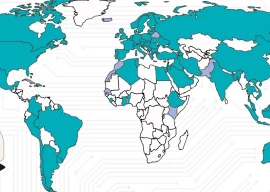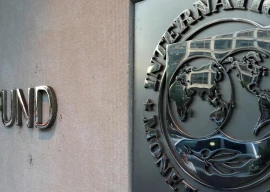
The axe has fallen on the PSDP, as in the presence of a large revenue shortfall, the government had no other option but to try to achieve the fiscal deficit target imposed by the IMF. Now, the target for the federal PSDP (excluding self-financing) in 2014-15 has been set at Rs525 billion, even below the original target of 2013-14. However, at the same time, there has been a veritable explosion in the number and cost of projects added to the portfolio of projects to be financed through the PSDP.
The throw forward (remaining cost) of ongoing projects stands at Rs4218 billion as of July 1, 2014. The cost of new projects is Rs3,540 billion. Therefore, the federal portfolio of projects has been expanded in one year by a massive 84 per cent and the total cost now is Rs7,758 billion. Given the PSDP size (including self-financing by corporations) of Rs660 billion, this means that it will take almost 12 years on average to fully execute a project!
What are the key sectors where new projects have been added? Clearly, the biggest expansion is in Wapda (power sector) of Rs1,595 billion, due to the inclusion of the Bunji Hydro Power Project. This project has the potential of generating 7,100 megawatts of electricity.
The next major inclusion is of new projects in the China-Pakistan Economic Corridor (CPEC) of Rs746 billion, consisting primarily of the cost of the Karachi-Lahore motorway. The remaining Rs1,199 billion includes projects to be executed by a multitude of other divisions of the federal government. Already, new projects have preempted 31 per cent of the PSDP funds. This diversion may delay the completion of ongoing projects.
The Planning Commission has passively accepted the substantial spreading thin of development resources. The size of the portfolio of Rs7,758 billion is much too large in relation to the available resources, which may even be cut during the year, if past experience is any guide.
What is unacceptable is that the Planning Commission has included a large number of new projects, with allocations in 2014-15 that currently have ‘unapproved status’. This is a serious violation of the procedure for appraisal and approval of projects. A project has to have a PC-1, indicating the cost-benefit analysis and the returns from the project. It then generally has to be subjected to approval by the Central Development Working Party/Executive Committee of the National Economic Council, depending on its size. Are the new projects in the PSDP likely to be given ex-post approval subsequently in a ritualistic manner? PC-1 documents of new mega projects need to be put on the Planning Commission’s website.
Furthermore, it is not clear how the financing for the large portfolio of projects will be organised. The contribution of foreign assistance is Rs102 billion, equivalent to 19 per cent of the PSDP outlay (excluding self-financing) in 2014-15.
Presumably, the understanding is that the large amount of $32 billion will be forthcoming in the next seven years from the Chinese government (primarily through the China EXIM Bank). This will include financing for projects in the CPEC, Chashma nuclear power projects and a large number of coal-based power plants. All these projects have been included in the PSDP without the formal process of ‘financial close’ being completed.
On top of all this, there appears to be a complete disconnect between the ministries of Planning and Development and Finance. The three-year Medium Term Budgetary Statement of the latter provides hardly any ‘fiscal space’ for increased funding of the larger portfolio of projects in the PSDP in 2015-16 and 2016-17. There is little increase in development expenditure as a percentage of GDP. Instead, the fiscal deficit is proposed to be brought down sharply to four per cent of GDP.
Given that the country is entering a capital-intensive stage of development, with large investments in dams, nuclear and coal-based energy projects and highways, the federal PSDP will have to be raised from the projected level of 1.8 per cent of the GDP (excluding self-financing) to over three per cent. This will take the fiscal deficit in 2015-16 and 2016-17 to well above four per cent of GDP.
Overall, the federal PSDP of 2014-15 reveals a hurried and ad hoc inclusion of a number of large, new projects. This has been done without adequate project preparation, approval and financing arrangements. The Ministry of Planning and Development must prioritise and insist that the due process be followed in appraisal and approval. Also, it must resist big cuts in releases for the PSDP during a financial year. Furthermore, it must ensure that the implementation capacity is generally expanded to handle the peak in development spending that is likely to come in the next few years.
Published in The Express Tribune, June 22nd, 2014.
Like Opinion & Editorial on Facebook, follow @ETOpEd on Twitter to receive all updates on all our daily pieces.
COMMENTS (3)
Comments are moderated and generally will be posted if they are on-topic and not abusive.
For more information, please see our Comments FAQ


































Dr Hafiz Pasha charged over Rs 5 Million recently from FBR for a report on increasing taxes.According to some,it was a re-cycled report with old solutions and now that report has been filed in a vault in FBR and the key has been thrown out
This is a great article but one must also think about taxes our media has role to play in making the public pay its fair share i.e. by saying it's patriotic to pay taxes.